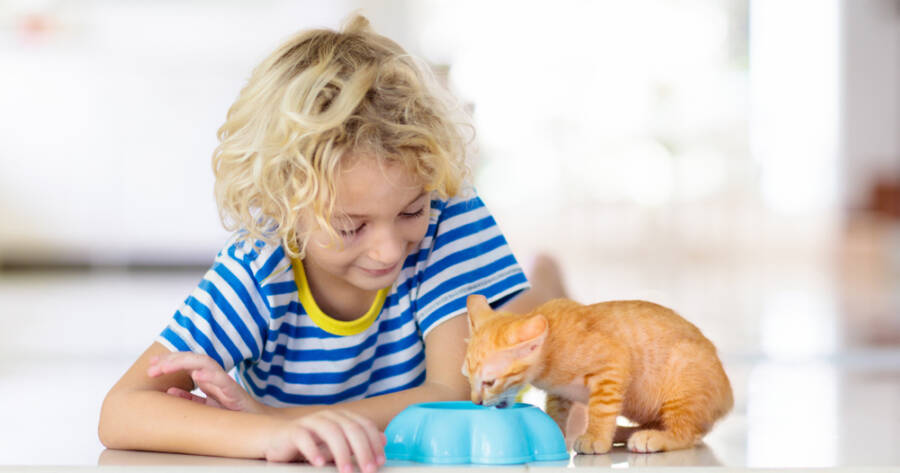Bringing a new pet home is an exciting experience, but it also comes with important responsibilities. Whether you’re welcoming a puppy, kitten, rabbit, or small critter like a hamster or guinea pig, creating a safe and pet-friendly environment is crucial to their well-being. Proper pet-proofing helps prevent accidents, reduce stress, and protect both your pet and your home. This guide provides a comprehensive checklist for pet-proofing your space and ensuring a smooth transition for your new furry friend.
1. General Pet-Proofing Tips for Any Pet
No matter what kind of pet you have, there are common household hazards to be aware of. Here are some universal pet-proofing tips:
- Secure electrical cords and chargers: Pets love to chew, and exposed wires pose an electrocution risk.
- Remove toxic plants: Common houseplants like lilies, aloe vera, pothos, and sago palm can be poisonous to pets.
- Store cleaning supplies safely: Keep detergents, disinfectants, and chemicals locked away or in high cabinets.
- Avoid small choking hazards: Buttons, coins, jewelry, rubber bands, and small toys should be kept out of reach.
- Use pet-safe trash cans: Pets may dig into trash, exposing themselves to harmful foods or objects.
- Block off restricted areas: Use baby gates or closed doors to keep pets away from potentially dangerous rooms (e.g., garages or basements).
2. Puppy-Proofing Your Home
Puppies are curious, energetic, and prone to chewing, so preparing your home for a new dog requires extra precaution.
- Chew-proof furniture and household items: Provide appropriate chew toys to deter them from biting shoes, furniture, or cables.
- Secure food and medications: Many human foods (chocolate, grapes, onions) and medications are toxic to dogs.
- Cover sharp edges and fragile items: Puppies may knock things over while playing.
- Install pet gates: Block off staircases or rooms where a puppy could get stuck or injured.
- Create a designated potty area: Place pee pads or take them outside frequently to prevent accidents inside.
3. Kitten-Proofing Your Home
Kittens are small, agile, and love to explore, so ensuring their safety means addressing potential climbing hazards and toxic materials.
- Secure window screens and balconies: Cats love to perch, and an unsecured window can lead to dangerous falls.
- Hide dangling cords and strings: Loose strings, curtain cords, and ribbons can be choking or strangulation hazards.
- Keep the toilet lid closed: Kittens can fall into toilets and struggle to get out.
- Avoid toxic essential oils: Many oils (tea tree, eucalyptus, peppermint) are toxic to cats when ingested or inhaled.
- Provide scratching posts: To protect your furniture, offer scratch-friendly surfaces like sisal posts or cardboard scratchers.
4. Small Pet-Proofing: Rabbits, Hamsters, and Guinea Pigs
Unlike dogs and cats, small pets like rabbits, hamsters, and guinea pigs require specific enclosures but still need a safe environment for supervised play.
- Rabbit-Proofing Tips:
- Cover electrical cords with cord protectors or PVC tubing.
- Block off small spaces where they might get stuck.
- Provide safe chew toys to prevent furniture and carpet damage.
- Hamster & Guinea Pig Safety:
- Secure cage doors to prevent escape.
- Keep enclosures away from direct sunlight and drafts.
- Use pet-safe bedding (avoid cedar or pine shavings, which release harmful oils).
5. Escape Prevention: Keeping Pets Safe Indoors and Outdoors
Pets are naturally curious and may try to escape if given the chance. Secure your home and yard with these precautions:
- Microchip and ID tags: Ensure pets have proper identification in case they do get out.
- Fence in your yard: A secure fence with no gaps can prevent dogs from digging under or jumping over.
- Use pet-proof doors: Secure windows, install pet-friendly screens, and use baby gates indoors.
- Keep pets leashed outdoors: Until fully trained, always use a leash or harness to prevent runaway situations.
6. Creating a Comfortable Space for Your Pet
Beyond safety, pets need a comfortable, stress-free environment to thrive.
- Set up a cozy sleeping area: Provide a soft bed, blanket, or enclosed space for your pet to relax.
- Offer interactive toys: Puzzle toys, chew toys, and scratching posts keep pets entertained and reduce boredom.
- Provide access to fresh water and food: Keep bowls in a quiet, safe area where pets feel comfortable eating.
- Use pheromone diffusers: Products like Adaptil (for dogs) or Feliway (for cats) can help ease anxiety and comfort new pets.
Making Your Home Pet-Friendly and Safe
Pet-proofing is a crucial step to ensuring your new furry friend stays safe, happy, and stress-free. By taking precautions against household hazards, providing escape-proof spaces, and setting up a comfortable pet zone, you create an environment where pets can thrive and feel at home. Whether you’re bringing home a playful puppy, curious kitten, or small critter, these pet-proofing tips will help them adjust safely and happily to their new space.

